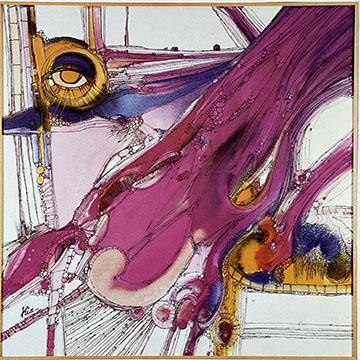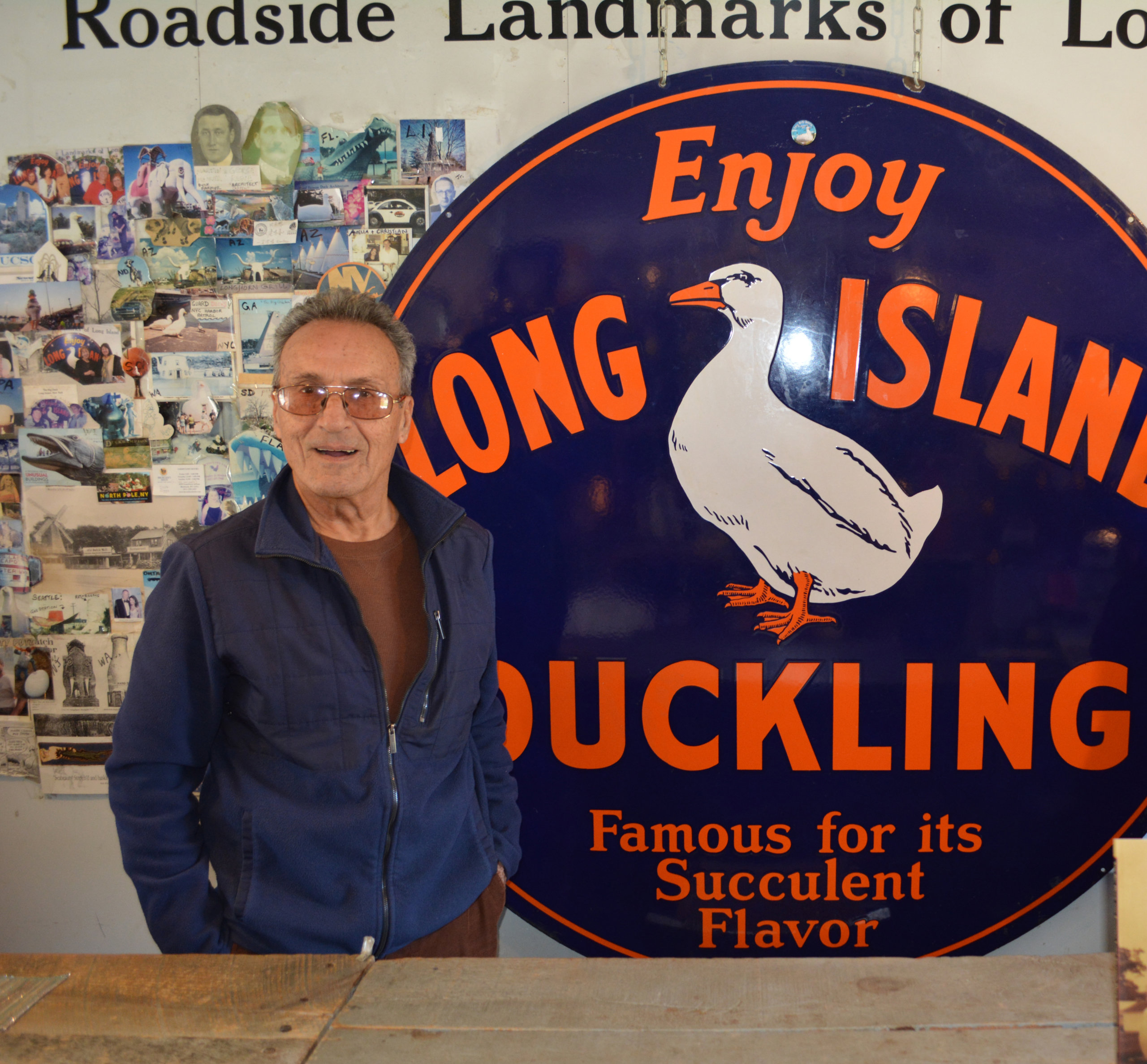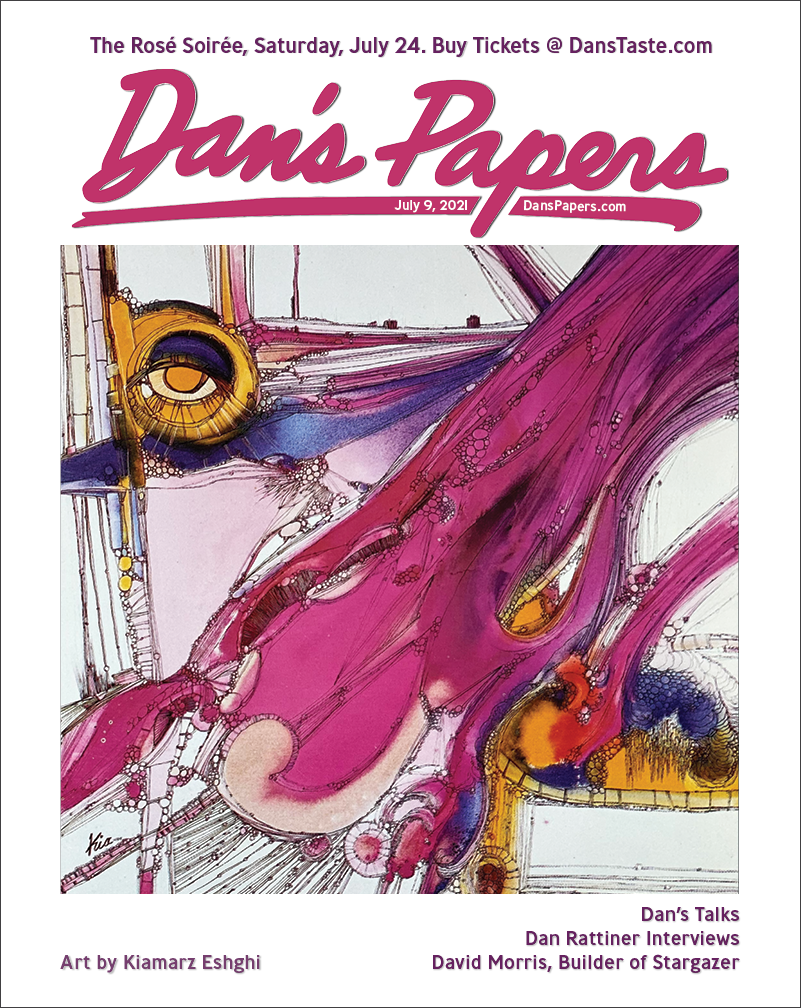Dan's Papers Cover Artist Kia Eshghi Discusses 'Vision #1'

This week’s cover artist, Kiamarz “Kia” Eshghi, has spent more than six decades working as an artist and musician in Iran and in the United States.
Raised in the city of Tehran with advanced schooling in classical art and Persian miniature, as well as the classical Persian zarb drum, Eshghi’s painting and drumming abilities were put on display right out of high school—in local art shows, on stage, radio and television. He also broke into acting and stage design through his connection to the Honarhaye Ziba governmental art institute at which he had trained. At age 25, he and his wife Pouran left Iran for the United States.
Throughout the 1970s and ’80s, he exhibited his paintings throughout New York, including at his own Gallery Bond Street, and he was even invited by the Iran Center at Columbia University to participate in a show celebrating talented Iranian artists. One of his proudest exhibitions was a solo show of his most vibrant pieces that took place at the esteemed Queens Museum of Art. His paintings have also become popular with architects and interior designers who often work them into their chic designs.
Throughout this time, Eshghi has also continued to hone his drumming skills, which earned him several performances at Carnegie Hall, New York University and other prestigious venues. In addition to his painting and drumming accolades, he and Pouran are also well-known as former owners of The Big Duck in Flanders and the ones who donated the iconic structure to Suffolk County. Today, they are successful New York business owners with a lovely home in Hampton Bays.
Here, Eshghi discusses this week’s cover art: “Vision #1.”

What is the story behind “Vision #1?”
(There was a time) when this style wasn’t around, and I brought it to my canvas, calling it “organic abstract.” That’s when we gave a name to my technique, and everybody was happy and liked it. … Every five to 10 years I try to step up and do something new, and most of the things that were done at the time, in the 1980s and ’90s, were organic abstract. The color was mostly done by the ink, dye and mixed media—everything is on a canvas.
It’s easy to look at and come up with your own version of the story in the painting. You can always look into and bring some more out of that painting. … It is a technique that I’ve never seen before as an artist. I look at a lot of books and artwork, but there is nothing out there that matches the systematic work that I put through my brush to my canvas. The word “unique” probably fits.
How do your paintings play into your own story?
Each piece has a story on its own shoulders, and each piece brings in a good portion of my life, showing how my life started with art. And music has a lot to do with it because I am a drummer, which a lot of people don’t know. We brought the drumming, Persian drumming, up to this situation where we were invited to do pieces in Carnegie Hall. I played like three or four times in Carnegie Hall, and for one or two of them, I wasn’t just a musician, I was also working as production manager. I had created that show. It’s a kind of mix and match in the mind of a musician who does painting and a painter who does drawing and
drumming.
What makes this piece an ideal fit for a Dan’s Papers cover?
I think any of my pieces are nice for a Dan’s cover! When Vicki (Schneps-Yunis) picked up this one, I said, “Fantastic! That’s a great piece.” But to be honest, any of the pieces that I have in my stock, and the things that I’m doing lately, are all related. … My works are creative works, and sometimes they all become one. And I can see other pictures, like “Vision #1,” I can see it in “Blue Harmony.” They might be separated by the coloring that I did, but originally, they’re based on the same creative drawings.
What do you find most rewarding or fulfilling about creating these unique works of art?
I enjoy it when each piece comes to the end. I work and I search—I work and I search, and I come up with the ideas that maybe will satisfy me. Even if not, little by little, I get used to new types of work. My work with the canvas is a lot about the relationship between me and my work. … I cannot talk too much about the pieces individually, but in the group work, you can see it’s really satisfying.




